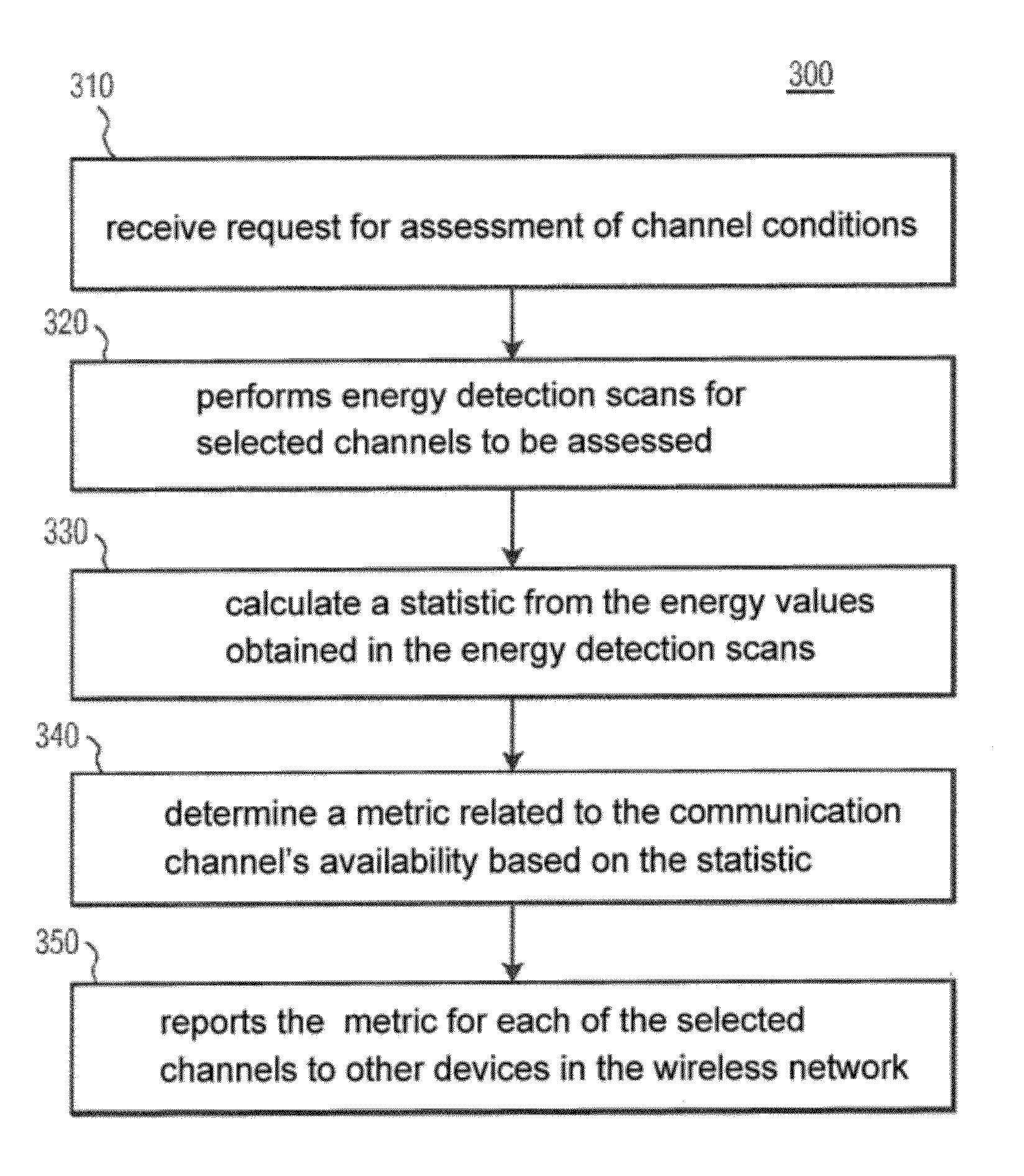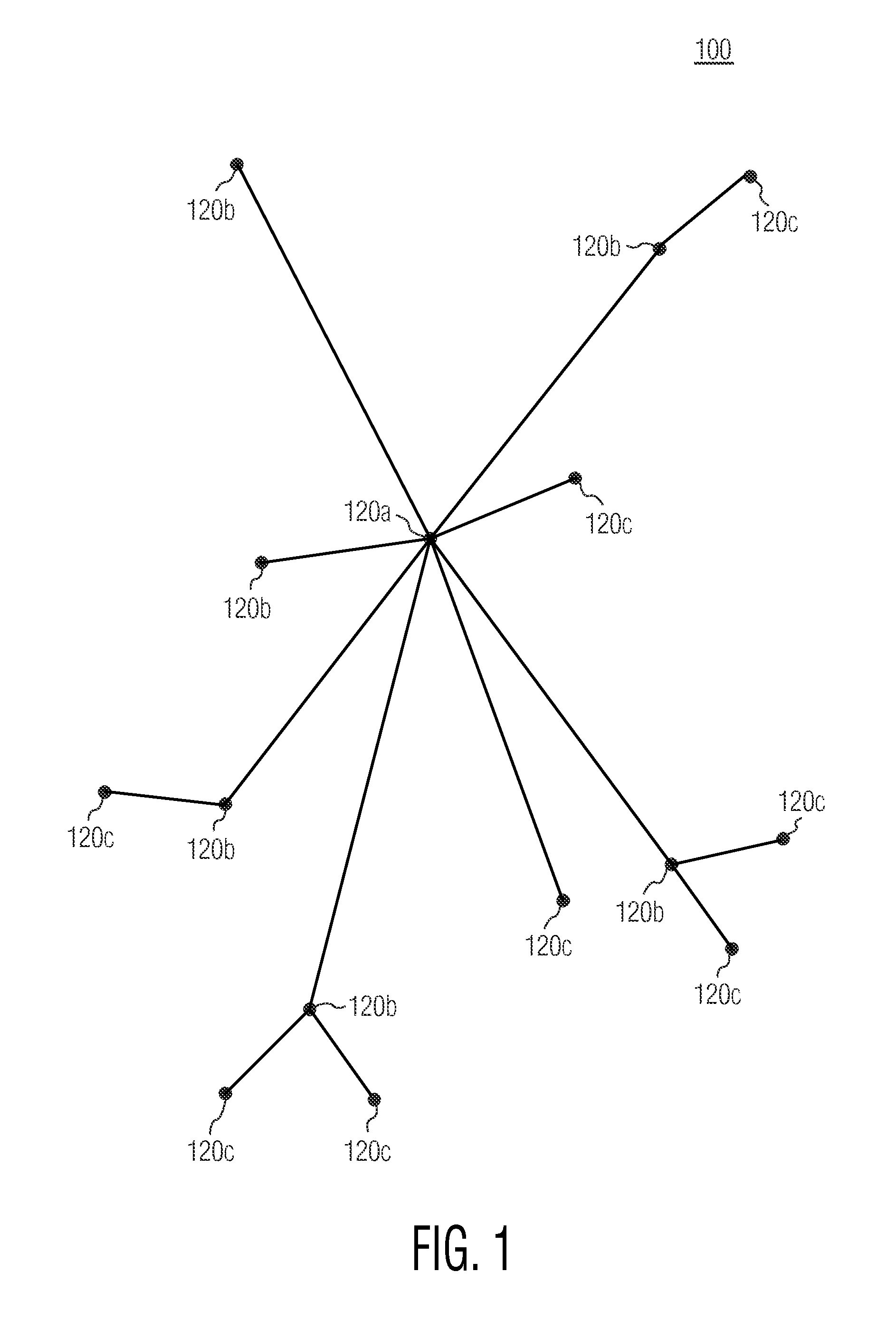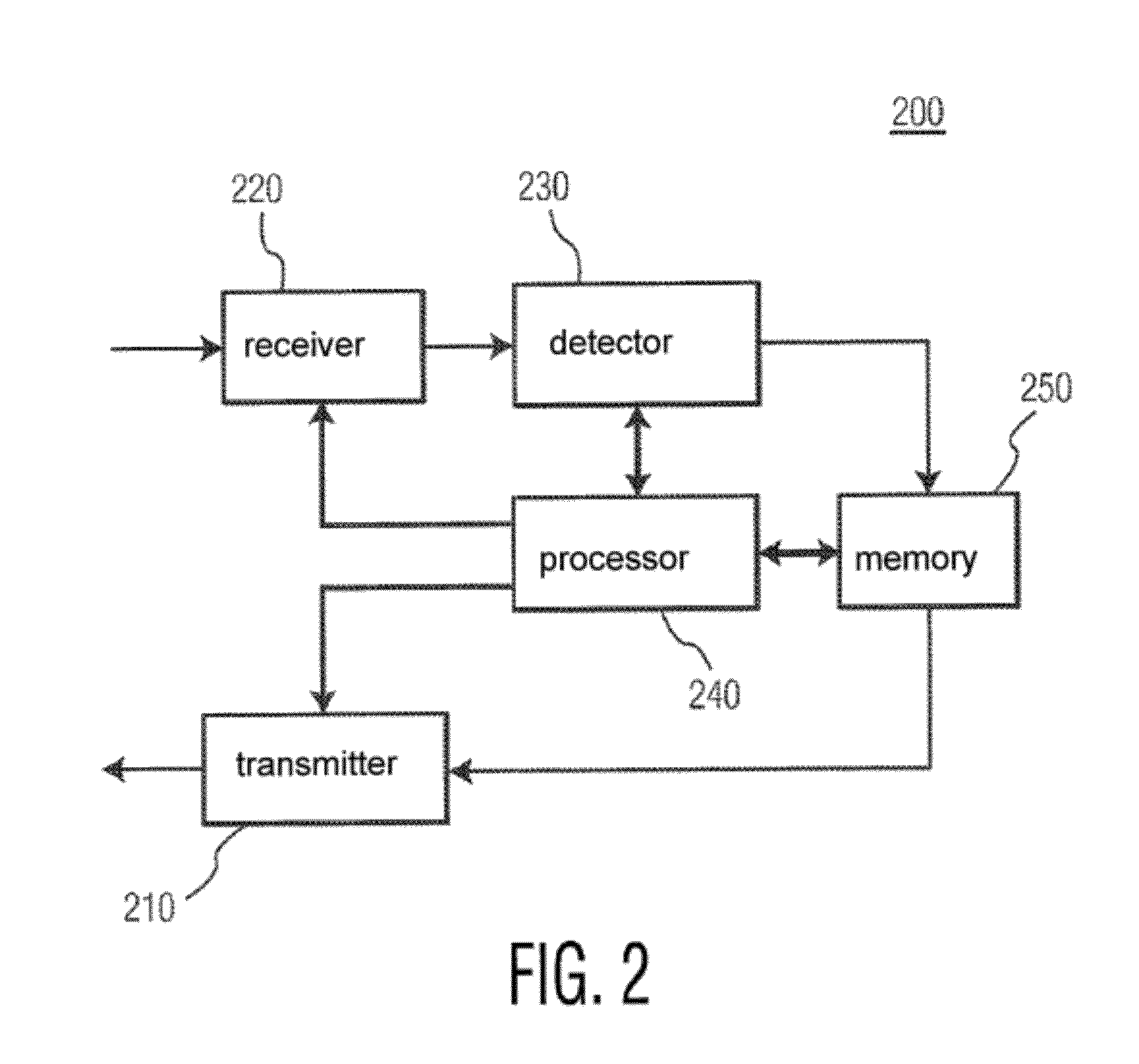Gathering and reporting data concerning communication channel conditions for a wireless device in a wireless network
a wireless device and communication channel technology, applied in the field of wireless devices and wireless networks, can solve the problems of inability to know how much of the time (if any) the received power level is, the energy value may be very low, and the traffic can interfere with zigbee traffi
- Summary
- Abstract
- Description
- Claims
- Application Information
AI Technical Summary
Benefits of technology
Problems solved by technology
Method used
Image
Examples
second embodiment
[0078]Table 6 shows a payload format of a network environment status message from a wireless device. In the embodiment of Table 6, the payload includes a plurality of cost values assigned by wireless device 200 each indicating an estimated availability of communications using the corresponding communication channel, as discussed in greater detail above.
[0079]
TABLE 6Octets: 141VariableStatusScannedScannedSet of cost numbers eachChannelschannelsindicating an estimatedlist countavailability ofcommunications usingthe correspondingcommunication channel
third embodiment
[0080]Table 7 shows a payload format of a network environment status message from a wireless device. For additional flexibility, a wireless device and a PAN Coordinator, for example, may have a table of predefined metrics which assigns an identifier to each of the predefined metrics. In that case, the wireless device may utilize the payload format illustrated in Table 6, which includes a field to provide an identifier of the metric that is being reported.
[0081]
TABLE 7Octets: 14111VariableStatusScannedScannedInformation typeLengthSet of values (eg:channelschannels(eg: indicatesminimum valueslist countminimum valuesreceived from Nincluded)energy scans)
fourth embodiment
[0082]Table 8 shows a payload format of a network environment status message from a wireless device. The payload format of Table 8 includes fields for a wireless device to indicate a plurality of metric types that are being reported, together with their corresponding field lengths.
[0083]
TABLE 8Octets: 14111Variable11VariableStatusScannedScannedInformationLengthSet ofInformationLengthSet ofchannelschannelstype 11valuestype 22valueslist count12
PUM
 Login to View More
Login to View More Abstract
Description
Claims
Application Information
 Login to View More
Login to View More - R&D
- Intellectual Property
- Life Sciences
- Materials
- Tech Scout
- Unparalleled Data Quality
- Higher Quality Content
- 60% Fewer Hallucinations
Browse by: Latest US Patents, China's latest patents, Technical Efficacy Thesaurus, Application Domain, Technology Topic, Popular Technical Reports.
© 2025 PatSnap. All rights reserved.Legal|Privacy policy|Modern Slavery Act Transparency Statement|Sitemap|About US| Contact US: help@patsnap.com



